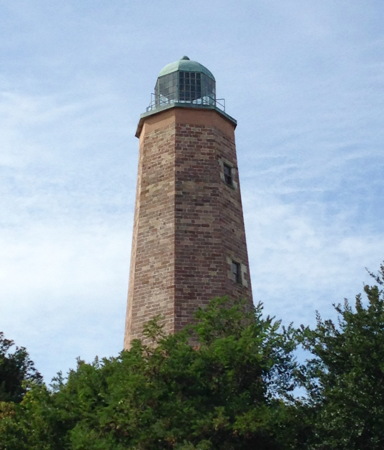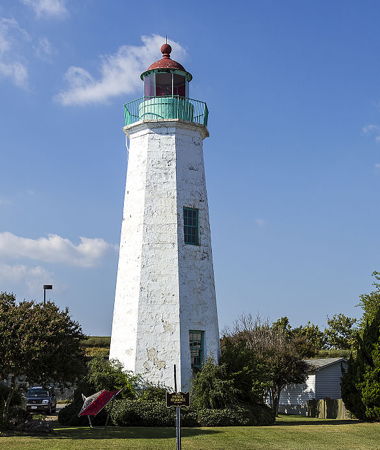When the first Congress met in 1789 one of its first acts was to take responsibility for lighthouses and other aids to navigation throughout the new country. For the next quarter century new lighthouses were authorized individually by Congress, and the highest officials of the government, including the president, were involved in selecting sites and contractors.
The early federal lighthouses were built sturdily of cut stone (or brick) rather than rubblestone, they were in some cases taller than colonial lighthouses, and their engineering was better. Most of these lighthouses have survived to the present day because they were adequately funded and carefully built by a small number of skilled builders. Nearly all of them share the same basic octagonal design, a design based on the successful colonial lighthouses at Sandy Hook, New Jersey, and Cape Henlopen, Delaware. They are all blunt, massive towers with solid walls, very thick at the base and tapering like pyramids. Nine of them survive:
- Cape Henry, Virginia (1792) John McComb
- Montauk Point, New York (1797) John McComb
- Eaton's Neck, New York (1799) John McComb
- New London Harbor, Connecticut (1801) Abisha Woodward
- Faulkner's Island, Connecticut (1802) Abisha Woodward
- Old Point Comfort, Virginia (1802) Elzy Burroughs
- New Point Comfort, Virginia (1806) Elzy Burroughs
- Sands Point, New York (1809) Noah Mason
- Bald Head Island, North Carolina (1817) Daniel Way
A very important tenth tower does not survive. The original Cape Hatteras lighthouse was also an early federal octagonal, 100 feet tall. Built by Henry Dearborn after John McComb backed out of the bidding, it was completed in 1803 and demolished when the famous 200-foot tower was completed in 1870. An eleventh tower, the 75-foot first St. Simons Island Light in Georgia, was built in 1810 by James Gould and demolished in 1872 in favor of a more modern 105-foot tower.
Five of the lighthouses (Montauk Point, Eaton's Neck, New London Harbor, Faulkner's Island, and Old Point Comfort) remain in service today.




